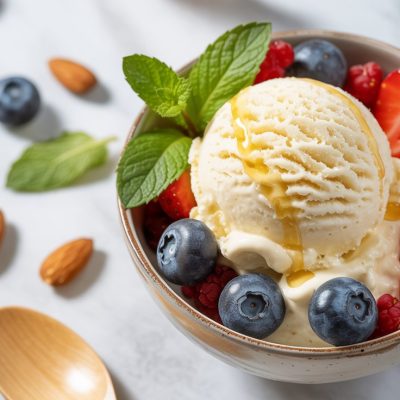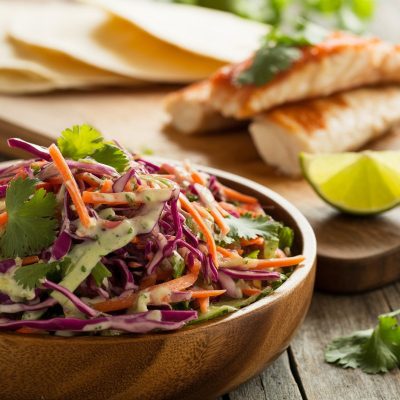Introduction
Have you ever arrived at a party and found yourself drawn not to the centerpiece, but to a tray of tiny, elegant bites—delicate morsels that whisper, “taste me”? That’s the magic of canapés. These bite-sized appetizers can transform any gathering into a memorable affair. In this article, I’ll walk you through everything you need to know—what canapés are, how to make them, creative ideas, presentation tips, and more. Think of canapés like little edible invitations to your palate—light, charming, and full of flavor.
Here’s a detailed roadmap of what we’ll cover:
What Is a Canapé? The Essence of Small Bites
A canapé is a small, prepared, and often intricate hors d’œuvre meant to be eaten in one or two bites. Unlike heavy appetizers, canapés are bite-sized statements of flavor—mini works of art. They are meant to tease the palate, not to satisfy hunger entirely.
-
They are served on a base (bread, cracker, polenta, vegetable slice).
-
They are topped with some spread or flavored medium (cream cheese, pâté, hummus, etc.).
-
Then a topping or protein is layered (smoked salmon, roasted pepper, shrimp, etc.).
-
Finally, a garnish (herb, citrus zest, microgreens) finishes the bite.
Because each bite is small, the balance of taste, texture, and visual appeal matters deeply. A perfect canapé is like a miniature painting you can eat.
History and Origins: From French Salons to Modern Buffets
Canapés trace their roots to French haute cuisine and salon culture of the 18th and 19th centuries. Wealthy hosts would offer elegant small bites during gatherings, often with delicate breads and ornate toppings. Over time, the concept spread across Europe and eventually into modern catering, where small, elegant hors d’oeuvres became a staple.
In classic French tradition, the base would often be toasted bread or crisp rounds, topped with fine ingredients. Today’s versions expand far beyond that: think global flavors, vegetarian innovations, and playful techniques. But the spirit remains: a small, visually appealing flavor burst.
Structure: The Four Key Elements
Every great canapé relies on four pillars. Let me break them down:
-
Base – This is your foundation (bread, cracker, vegetable).
-
Spread or Binding Layer – This helps hold toppings in place (cream, mashed legume, soft cheese).
-
Topping – The main feature (protein, roasted vegetable, fruit).
-
Garnish / Finish – Final touches like herbs, citrus zest, micro-greens, seasoning.
Imagine building a tiny sandwich: if any one layer is weak or out of balance, the bite falls apart in either flavor or structure. Think of it like a house: the base is the foundation, the spread is the mortar, the topping is the structure, and garnish is the decoration.
Base Choices: Bread, Crackers, Vegetables & More
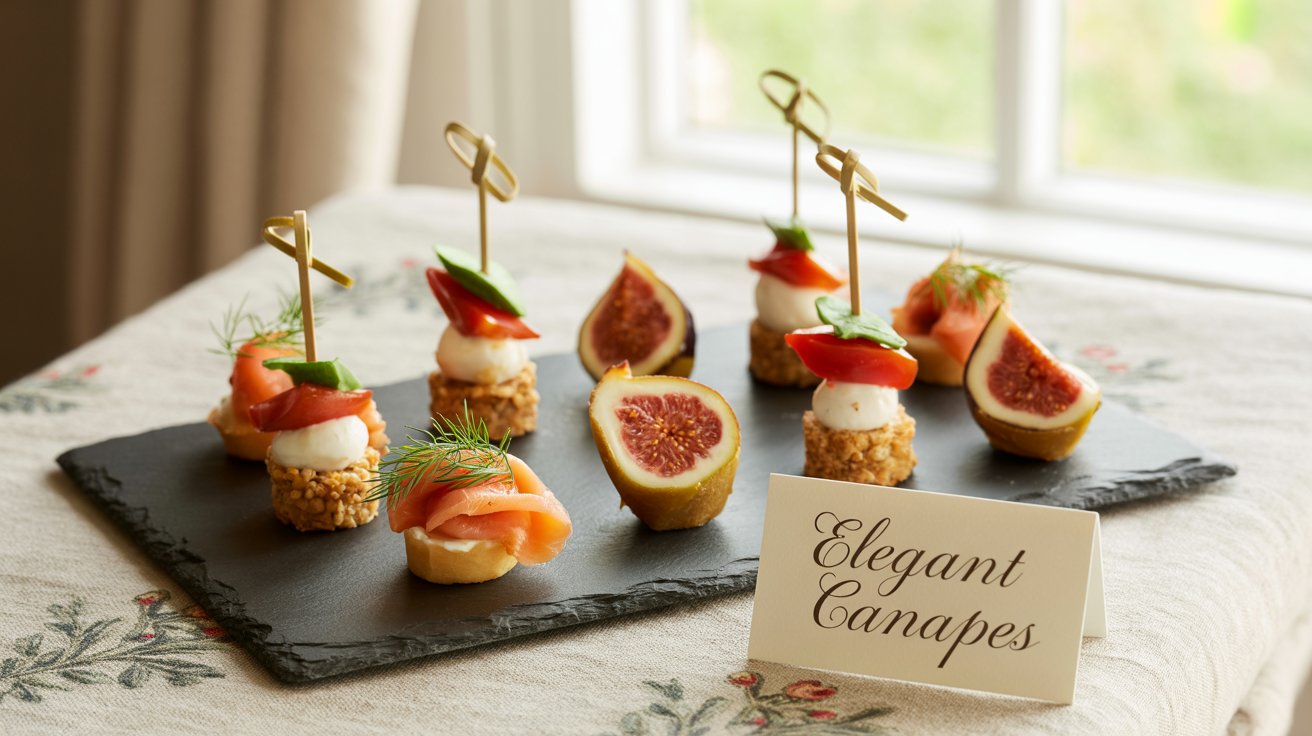
Choosing the right base is a fundamental decision.
Bread and Toasts
-
White, whole wheat, rye, sourdough—thin slices, lightly toasted (dry soaks less).
-
Brioche or challah—for richer versions.
Crackers and Crispbreads
-
Water crackers, seed crackers, rice crackers—versatile and neutral.
-
Flavored crackers (herb, whole grain) can add interest.
Vegetable or Fruit Slices
-
Cucumber rounds, zucchini, eggplant (lightly grilled).
-
Apple, pear slices (for sweeter or savory combinations).
Other Bases
-
Polenta rounds (fried or grilled).
-
Mini blinis, pancakes, wonton crisps for fusion-style bites.
Tip: Keep base sizes small (about 2–2.5 inches or less), so they remain bite-sized. Always “dry toast” bases so they don’t get soggy when spreads or toppings are applied.
Spreads and Toppings: Balancing Flavor
The spread or binding layer smooths transitions and keeps toppings anchored. Some favorites:
-
Soft cheeses (goat cheese, cream cheese, ricotta)
-
Pâtés or mousse (liver mousse, mousseline)
-
Hummus, tapenades, bean purées
-
Herb butters, flavored oils, aiolis
This layer adds moisture, depth, and helps unify the other parts.
Then comes the topping, which is the spotlight. But the topping should complement, not overwhelm. For instance, smoked salmon on herb-goat-cheese, or roasted beet and walnut crumble on whipped feta.
Protein and Vegetarian Options
Let’s look at some protein-rich and vegetarian ideas.
Proteins
-
Smoked fish (salmon, trout, mackerel)
-
Cured meats (prosciutto, salami, duck ham)
-
Seafood (shrimp, crab salad, scallop twists)
-
Roast beef or chicken slices (thin shaved)
-
Egg salad or deviled egg variants
Vegetarian / Vegan
-
Roasted vegetables (bell pepper, zucchini, eggplant)
-
Marinated mushrooms
-
Legume mash (chickpeas, beans, lentils)
-
Fruit combos (fig + goat cheese, pear + blue cheese)
-
Plant-based proteins (tofu, tempeh spreads)
You can mix and match: for example, a slice of cucumber base, herb hummus spread, a sliver of roasted beet, and a microgreen garnish.
Color, Texture, and Garnish: Artistic Touches
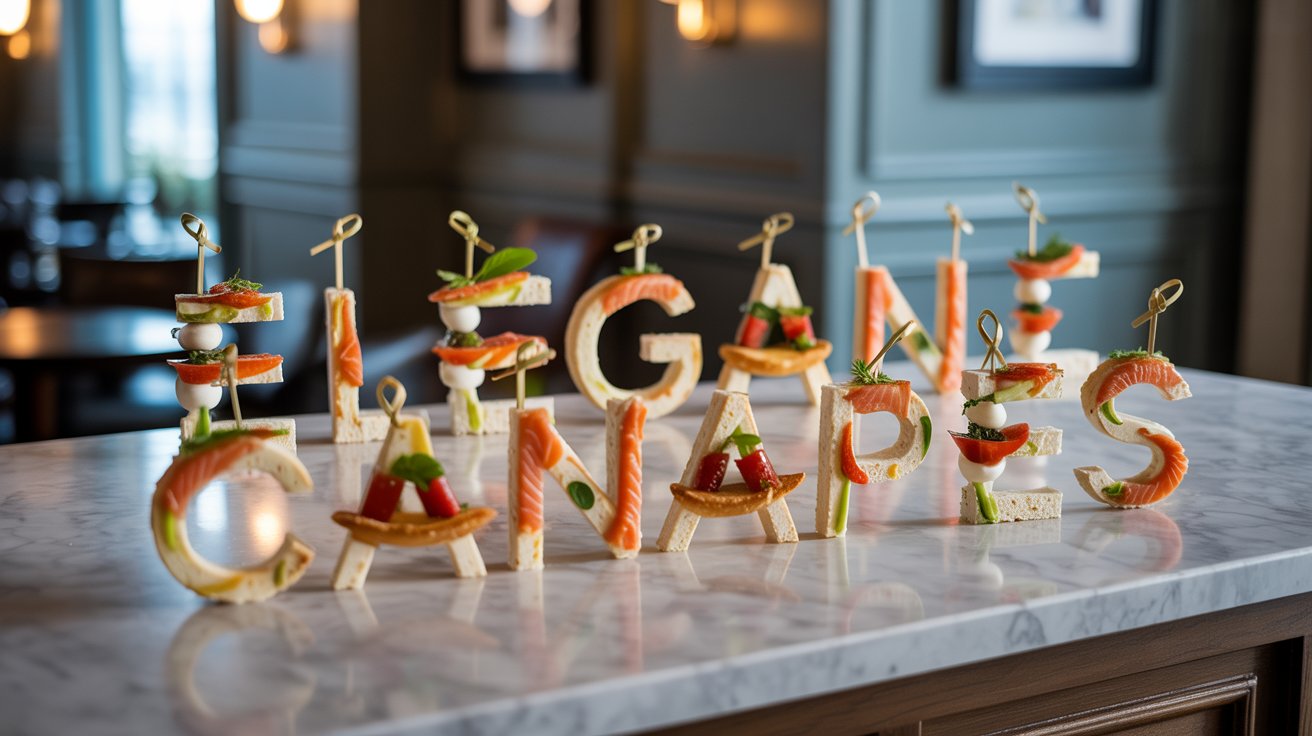
A canapé is as much about visual delight as flavor. Contrast and harmony play big roles.
Color
-
Combine bright reds, yellows, greens, purples
-
Use edible flowers, microgreens, citrus zest
Texture
-
Creamy spreads + crunchy base or topping
-
Soft protein + crisp vegetable
-
Sprinkle of nuts or seeds for crunch
Garnish / Finish
-
Fresh herbs (dill, parsley, basil)
-
Zest of lemon or orange
-
Drizzle of infused oil or balsamic glaze
-
Microgreens or sprouts
The garnish is like the frame around a painting—it highlights, but doesn’t dominate.
Flavor Pairing: Matching Tastes Like a Pro
How do you know what goes with what? A few guiding principles:
-
Contrast and complement: Pair creaminess with acid, sweet with salty, crisp with soft.
-
Herbs and aromatics: Basil + tomato, dill + fish, mint + pea.
-
Acid / citrus: A splash of lemon juice can brighten heavy toppings.
-
Umami and depth: Anchovies, mushrooms, aged cheeses bring savory depth.
Think of flavor pairing like dancing—partners should move together but not step on each other’s toes.
Dietary Considerations: Gluten-Free, Vegan, etc.
In today’s world, accommodating dietary needs is smart—and appreciated.
Gluten-Free
-
Use gluten-free crackers, crispbreads, or vegetable bases (cucumber, sweet potato)
-
Avoid wheat-based bread unless clearly labeled
Vegan / Plant-based
-
Skip dairy and meat
-
Use nut cheeses, hummus, vegetable purées, marinated tofu
-
Garnish with plant elements
Allergies (nuts, dairy, seafood)
-
Offer alternatives
-
Label distinct trays clearly
-
Use nut-free spreads if needed
Low-Sodium / Low-Fat
-
Go lighter on salt; use fresh herbs
-
Choose lean proteins
-
Use spreads with lower fat or dairy substitutes
Friendly menu design ensures everyone feels included.
Presentation and Serving Tips
Serving canapés well amplifies their appeal.
-
Use tiered platters, slate boards, or elegant trays
-
Arrange by color or theme (group similar bites together)
-
Provide small tongs, toothpicks, or forks
-
Serve in waves, not all at once (keeps fresh)
-
Temperature matters: some canapés do best chilled, others warm
-
Garnish last minute so freshness holds
Presentation is the stage; your canapés are the stars.
Make-Ahead Strategies & Storage
Parties often require prep ahead. Here’s how to manage it:
-
Bases and spreads can be prepared in advance (a day ahead).
-
Toppings that don’t spoil can be prepped (e.g. roast vegetables).
-
Do not assemble far ahead if bases risk sogginess—assemble shortly before serving.
-
Store components separately, cover with cling film, refrigerate.
-
Keep assembled canapés cold and cover lightly until serving.
The trick: do what you can early, but finish late.
Troubleshooting Common Issues
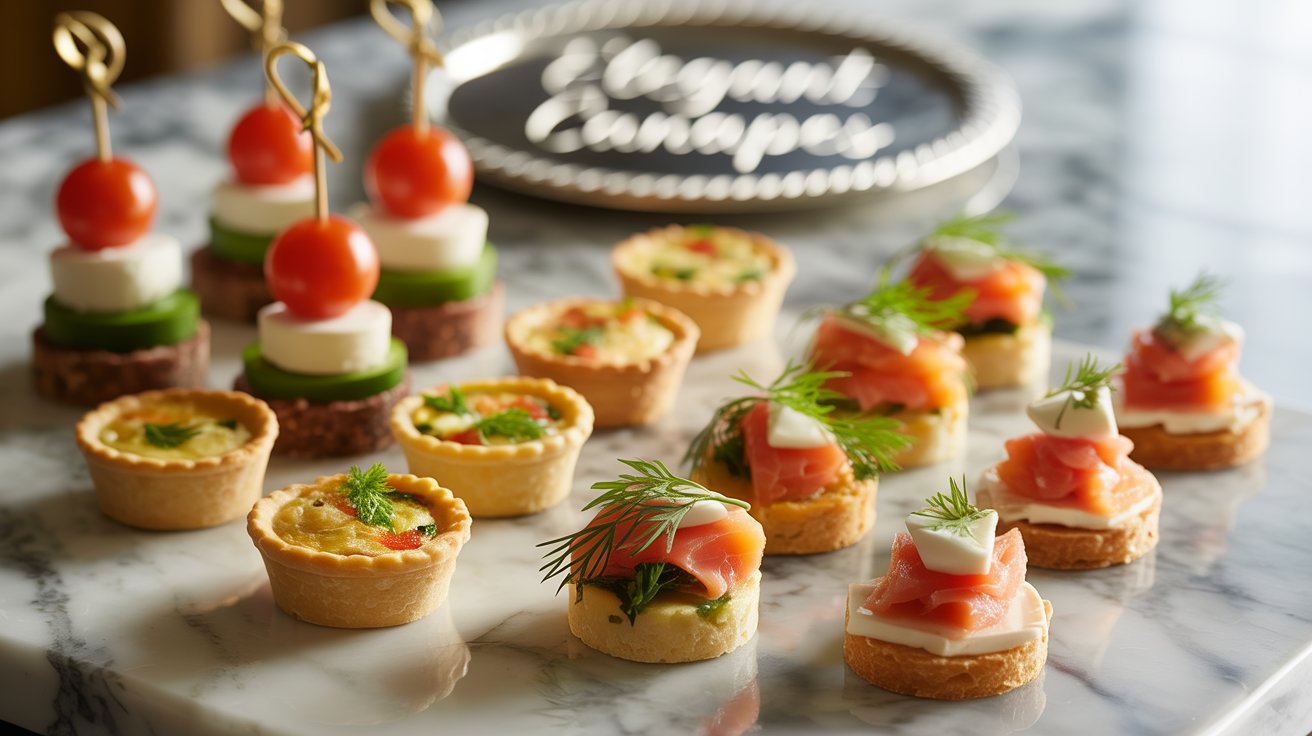
Even good plans face bumps. Here are common problems and fixes:
| Issue | Cause | Solution |
|---|---|---|
| Soggy base | Too much moisture or late assembly | Toast base dry, assemble just before serving |
| Toppings sliding off | Spread too thin or base too slippery | Use a thicker binding layer, roughen base |
| Flavor imbalance | Too salty, bland, or overpowering | Taste test, adjust acid or herbs |
| Browning or wilting garnish | Exposure to air or heat | Add garnish last minute |
| Overcrowded tray | Too many varieties jammed together | Space them, use multiple trays, rotate items |
Keep a steady eye on texture, timing, and freshness.
Occasions and Menu Planning
Where do canapés shine? Almost everywhere!
-
Cocktail parties — perfect finger food
-
Weddings, receptions — elegant starters
-
Holiday gatherings — festive flavors
-
Corporate events — classy, bite-sized options
-
At-home entertaining — manage guest flow
Menu balance tip:
-
Serve 6–8 pieces per person for hors d’oeuvre-only events
-
Offer variety: one fish, one meat, one vegetarian, one sweet or fruit-based
-
Consider pairing with drinks (wine, cocktails, non-alcoholic pairings)
Cost, Scaling, and Practical Tips
When scaling up for 50 or 100 guests, you’ll want efficiency.
-
Bulk spread components (cheese blends, hummus) in one large batch
-
Uniform base size to streamline cutting and prepping
-
Visual repetition helps: repeating types in sets of 3–5
-
Cost control: mix higher-end ingredients (smoked salmon) with affordable ones (roasted veggie)
-
Prep checklist: timing for chopping, toasting, assembly phases
A bit of planning saves time, stress, and money.
FAQs
1. What’s the difference between a canapé and a canapé?
That’s a fun twist: in some languages “canapé” also means a sofa! But here, we mean the appetizer. The canapé appetizer is the bite-sized hors d’oeuvre served on a base with toppings and garnish.
2. How many canapés should I plan per person?
For a cocktail event, plan on about 6–8 pieces per guest per hour. If it’s part of a larger meal, less may suffice (3–5).
3. Can I make canapés ahead and freeze them?
You can freeze some components (spreads, bases if plain) but not fully assembled canapés. Freeze carefully, thaw in refrigerator, and assemble just before serving.
4. What flavors pair well with smoked salmon?
Cream cheese or whipped herb cheese, a squeeze of lemon, dill or chives, capers or finely diced shallot—classic and harmonious.
5. How can I make gluten-free or vegan canapés?
Use gluten-free crackers or vegetable bases (cucumber slices, sweet potato rounds). For vegan, rely on nut cheeses, hummus, bean purées, roasted or marinated vegetables, and fruit components.
Conclusion & Final Thoughts
In a nutshell, canapés are more than pretty nibbles—they’re tiny ambassadors of flavor and style. They let you offer elegance in a spoonful, turning gatherings into memorable culinary moments. Throughout this guide, we’ve explored their structure, history, creative options, presentation tips, and how to tailor them to dietary needs. With a little practice and imagination, you can turn your next party into an edible art gallery.
Start small—try one or two simple canapé recipes at first. Once you gain confidence, you’ll find yourself inventing new combinations like a painter experimenting with colors. So roll up your sleeves, sharpen your knife, and let your creativity shine. You’ve got this.







